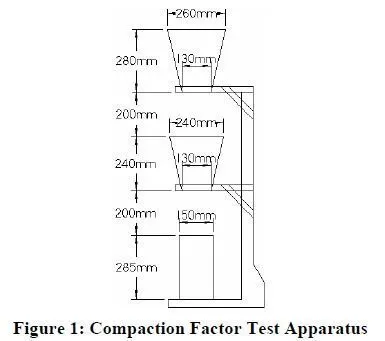The mini-slump test, which was originally developed by Kantro (1980) and later modified by Zhor and Bremner (1998), measures the consistency of cement paste.
The mini-slump cone is simply a small version of the slump cone. The mini-slump cone has a bottom diameter of 38 mm, a top diameter of 19 mm, and a height of 57 mm. The cone is placed in the center of a square piece of glass on which the diagonals and medians are traced. The cone is lifted and after one minute, the average spread of the paste, as measured along the two diagonals and two medians, is recorded.
Zhor and Bremner (1998) modified the device in order to measure more effectively the air entraining and plasticizing effects of admixtures on cement pastes. A clear plexiglass sheet, which is used instead of glass, is set on a balance. After the cone is removed, the mass of the concrete is measured and used to determine the air content of the paste in accordance with ASTM C185. The paste is left to harden on the plexiglass for two days. A planimeter is then used to measure the area of the hardened paste on the plexiglass sheet. Like the conventional slump test, the results of the mini-slump test should be related to yield stress. Research conducted by Ferraris, Obla, and Hill (2001) into the influence of mineral admixtures on the rheology of cement paste showed poor correlation between the results of the mini-slump test and yield stress, as measured with a sophisticated, laboratory grade parallel plate rheometer.
